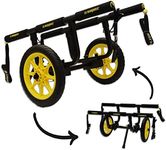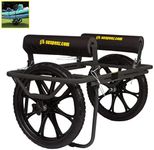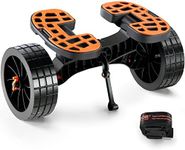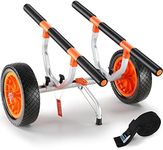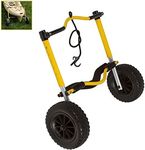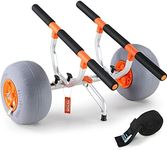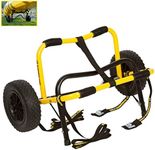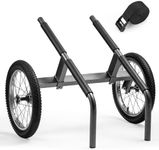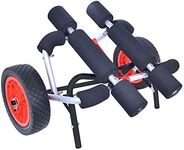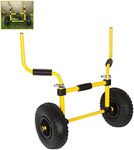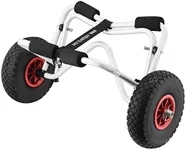Buying Guide for the Best Canoe Carts
Choosing the right canoe cart can make transporting your canoe much easier and more enjoyable. The right cart will save your back, protect your canoe, and help you move smoothly over different types of terrain. When picking a canoe cart, it's important to consider how, where, and how often you'll use it. Think about the weight of your canoe, the surfaces you'll be rolling over, and how much space you have for storage. Understanding the key features will help you find a cart that fits your needs and makes your paddling adventures more convenient.Weight CapacityWeight capacity refers to the maximum load the cart can safely carry. This is important because if your canoe and any gear you load onto the cart exceed this limit, the cart could break or become difficult to maneuver. Weight capacities are usually divided into light-duty (up to about 100 lbs), medium-duty (100-200 lbs), and heavy-duty (over 200 lbs). If you have a lightweight solo canoe, a light-duty cart may be enough. For larger tandem canoes or if you often carry extra gear, look for a medium or heavy-duty cart. Always check your canoe's weight and add any extra items you might transport to choose a cart that can handle the total load.
Wheel Type and SizeThe wheels are what make the cart roll, and their type and size affect how well the cart moves over different surfaces. Larger wheels (10 inches or more) are better for rough, uneven, or sandy terrain, while smaller wheels are fine for smooth paths. Wheels can be solid, air-filled, or foam-filled. Air-filled tires provide a smoother ride and handle bumps well, but they can get punctures. Solid or foam-filled wheels are maintenance-free but may not roll as smoothly over rough ground. Think about where you'll use the cart most—choose larger, air-filled wheels for trails and beaches, or smaller, solid wheels for paved surfaces.
Frame MaterialThe frame material affects the cart's strength, weight, and resistance to rust. Common materials include aluminum, steel, and sometimes plastic. Aluminum is lightweight and rust-resistant, making it easy to carry and durable in wet environments. Steel is stronger and can handle heavier loads, but it can rust if not cared for. Plastic frames are very light but usually only suitable for small canoes and smooth surfaces. If you need to carry the cart often or use it near water, aluminum is a good choice. For heavy canoes or rough use, steel may be better, as long as you keep it dry.
Cart Design (Foldability and Storage)Cart design includes how easily the cart folds or comes apart for storage and transport. Some carts fold flat or have removable wheels, making them easy to pack in your car or even in your canoe while paddling. Others are more rigid and take up more space. If you have limited storage or want to bring the cart with you on the water, look for a model that folds or disassembles easily. If you only use the cart at home or have plenty of space, a non-folding design may be fine.
Attachment MethodThe attachment method is how the cart holds onto your canoe. Most carts use straps or cradle arms to secure the canoe in place. Some have adjustable straps for a snug fit, while others use shaped pads or bunks. A secure attachment is important to prevent the canoe from slipping off while moving. If your canoe has a unique shape or you want extra security, look for a cart with adjustable straps or padding. For standard canoes, most basic attachment methods will work, but always check that the cart fits your canoe's width and hull shape.
